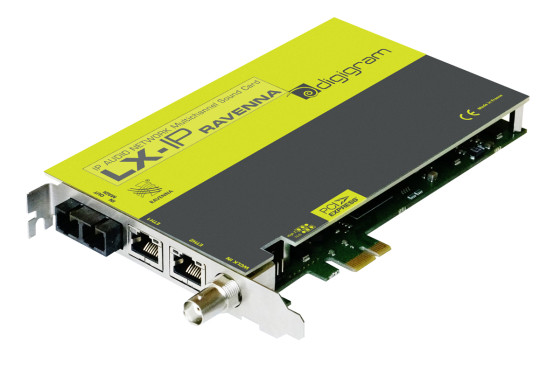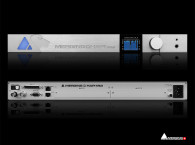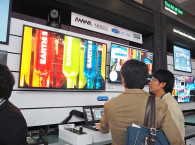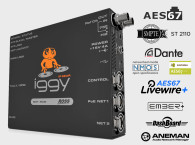The company is commited to expand its range of AoIP products with RAVENNA/AES67 connectivity and the LX-IP RAVENNA PCIe sound card was the first RAVENNA-enabled product developed by Digigram. Featuring ultra-low latency—down to one audio sample per IP packet—and up to 256 RAVENNA I/O channels from multiple RAVENNA streams, the LX-IP sound card is ideal for high-density audio production or automation applications in radio and TV broadcast studios.

Digigram originally confirmed the LX-IP PCIe sound card’s development during the NAB 2014 Show in Las Vegas, NV, announcing also a full multichannel audio digital interface (MADI) available as an option. The MADI option will be demonstrated at the IBC 2014 show (September 11–16 in Amsterdam) together with a new dedicated LX-MADI PCIe Sound Card equipped with an optical MADI. With both sound cards, embedded 64 × 64 routing gives users direct monitoring capabilities, along with record and play functions. Because the LX-MADI card is a hardware solution, it offers high stability regardless of the computational load presented by other applications—editing, processing, ingest, playout—supported by the host system.
The new LX-IP PCIe sound card with MADI option enabled the industry’s migration from synchronous audio (MADI) to IP audio (RAVENNA/AES67) in the studio environment. As a result, users can move from more expensive, less flexible proprietary equipment to standard commercial off-the-shelf (COTS) IT-based systems running common media-oriented IT protocols.
The new MADI option facilitates a seamless shift by supporting use of the LX-IP RAVENNA soundcard in a synchronous audio environment to stream up to 64/64 I/O MADI channels from/to the host PC and from/to RAVENNA/AES67 audio-over-IP (AoIP) equipment, with roundtrip latency down to 3 ms. Control of Digigram’s dual interface card or the dedicated LX-MADI card is straightforward, thanks to full compatibility with the industry-standard EMBER+ protocol.
As Pascal Malgouyard, head of product marketing at Digigram, explains, “As a robust media transport solution, RAVENNA goes beyond standard definitions such as AES67 to offer added functionality and performance capabilities while assuring interoperability with a wide variety of other media transport devices and networks. Our new LX-IP RAVENNA PCIe sound card takes advantage of these capabilities to provide users with exceptional audio quality and versatility in high-density professional audio-focused applications. In addition, the MADI interface allows a seamless migration from synchronous audio to RAVENNA / AES67 networked audio environments.”
At IBC 2014, Digigram will showcase the addition of RAVENNA/AES67 connectivity to the company’s IQOYA range of audio-over-IP (AoIP) codecs, which now enable users to get audio programs directly from an in-studio RAVENNA network and subsequently encode and stream them over IP to transmitter sites via a WAN in compliance with EBU ACIP. Users likewise can decode EBU ACIP streams from a WAN to their in-studio RAVENNA network. With these capabilities, radio stations can easily migrate towards the use of IP audio within their studios.
www.digigram.com






